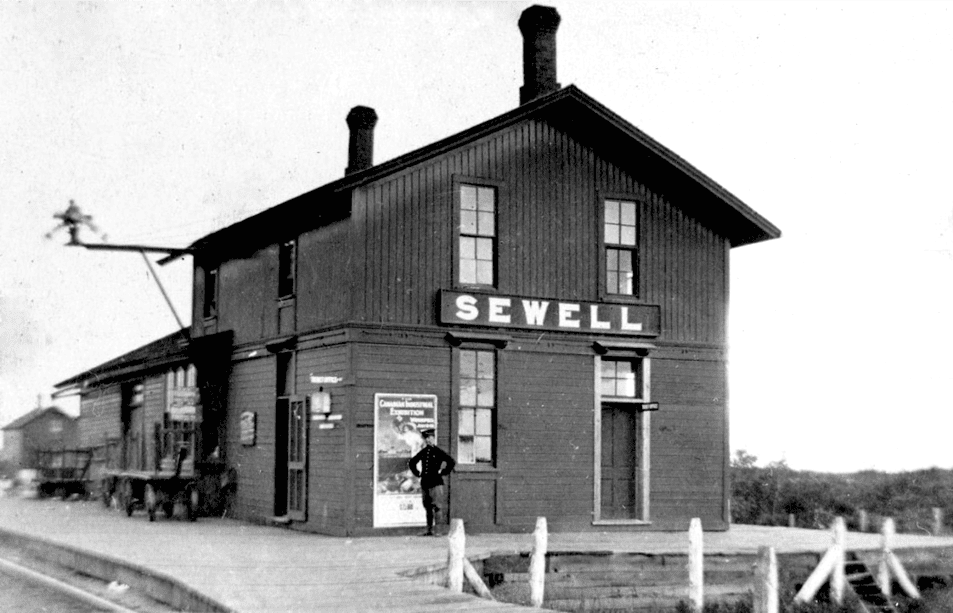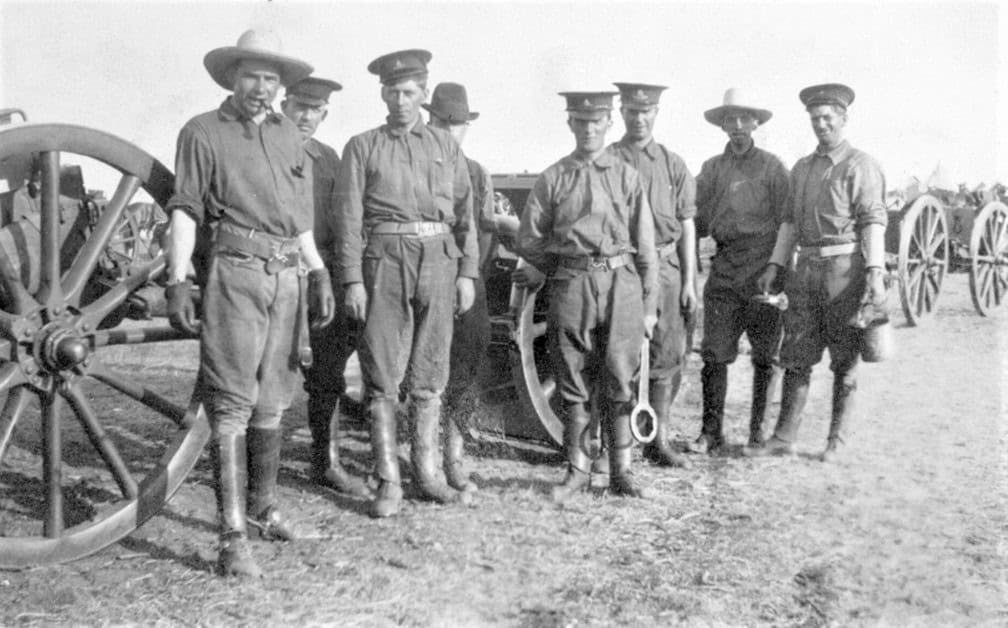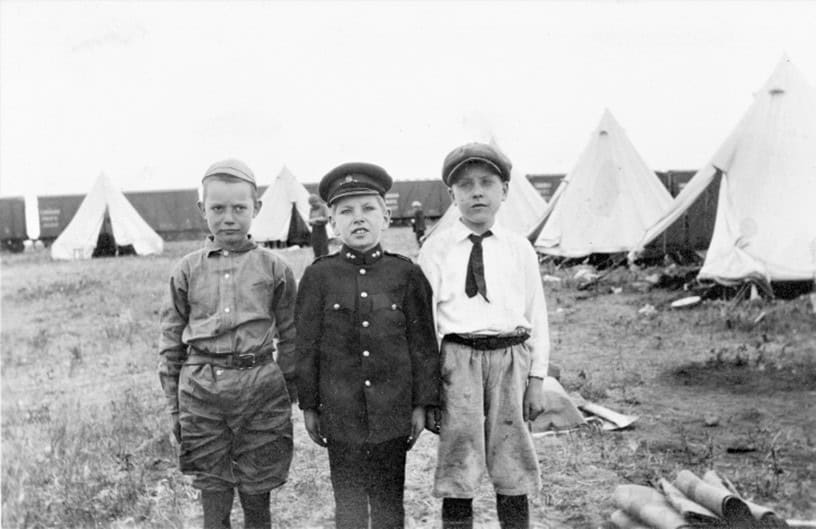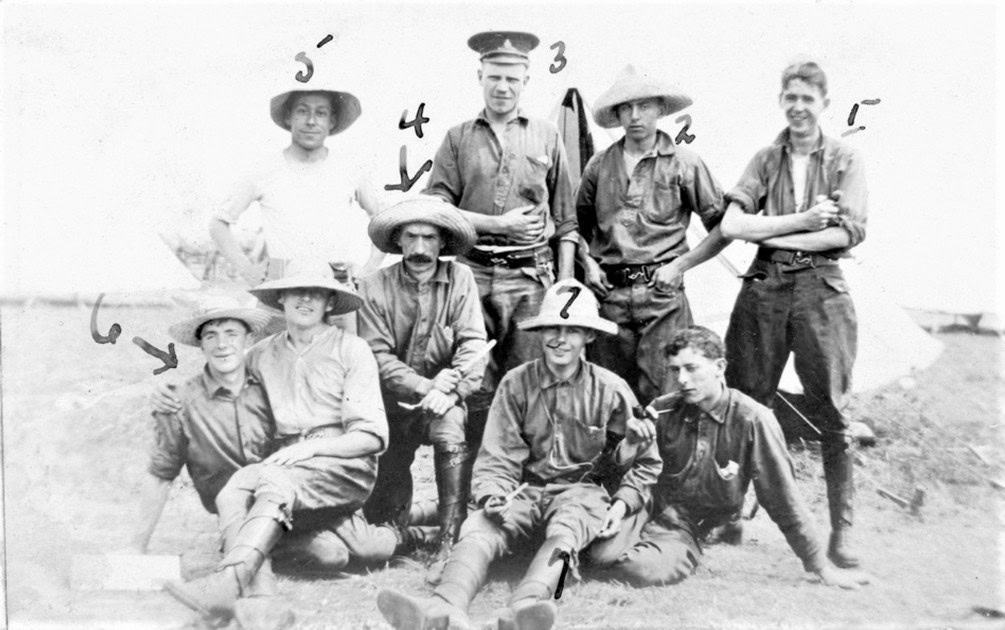Sergeant Morrow's Camp Sewell Scrapbook
The RCA Museum has a rare scrapbook containing photographs, and insightful commentary from Camp Sewell dated 1911 to 1914. The camp, located immediately north of CFB Shilo and approximately ten kilometres west of Carberry, Manitoba, operated from 1910 to 1934. The camp’s name changed to Camp Hughes after Major-General Sir Sam Hughes in 1915.

A photo of Sewell Station, the entry point for every soldier at Camp Sewell dated 1912.
The scrapbook photographer was Sergeant George D. Morrow. Sergeant Morrow came out of the original artillery unit in Manitoba, the 13th Battery, CFA, also known as the Winnipeg Field Battery. On 13 October 1871, the Canadian government approved the formation of the 13th Battery stationed at Fort Garry, outfitted with two 7 Pounder Smooth Bore Cannons left behind from the Colonel Wolseley Expedition.
Gunners from the 13th Battery took part in the Northwest Rebellion in 1885. Many joined C Battery in 1900 and fought in the Boer War in battles such as the Relief of Mafeking. On 13 January 1901, the 13th Battery moved from Forth Garry to Fort Osborne Barracks in Winnipeg. In 1905, they received their first modern 18 Pounder field guns, which they fired on vacant land at St. Charles on the outskirts of Winnipeg.
In the scrapbook, most of the photos depict the 13th Battery on summer training at Camp Sewell. Many of the images list the names of the soldiers from 1911 to 1914. Note the picture of 13th Battery Gunners at Camp Sewell with 18 Pounders dated 1913.
Before establishing Camp Sewell, militia units from Saskatchewan and Manitoba, known as District 10, participated in decentralized summer training camps. This district had two infantry brigades, two cavalry brigades, and independent artillery units. They held training locally near armouries on private property, and due to poor communication and standardized instruction, the militia lacked uniform training results.

In 1909, Commander of District 10, the famous Colonel Samuel Steele, CB, KCMG, located a suitable stretch of land to train the militia inside the Spruce Woods Forest Preserve. However, the Federal Government did not permit them to train inside the forest preserve. Colonel Steele made arrangements with the Hudson Bay Company (HBC) to use land next to the Sewell train station and outside the forest preserve for military training purposes.
On 21 June 1910, the first troops arrived at Camp Sewell, and Colonel Steele supervised the training. The 13th Battery, CFA was one of the first ten units to participate in the centralized annual summer camps. The first summer camp included 1,472 officers and men with 1,042 horses over ten days. On 29 June 1910, General Sir John French, the first Commanding Officer of A Battery from Kingston in 1871, inspected all the soldiers at Camp Sewell. The ten units performed efficiently compared to past decentralized camps and developed a cohesive discipline.

The scrapbook contains information about running the camps during the formative years. For instance, it includes photos and notes on the gun drill, forgotten items, such as “tables & chairs for the tents. No supply of paper for purposes of keeping a tab on stores going out. Not enough lanterns.” Sergeant Morrow added a photo of the boy mascots of three units. On the right was Dexon, center Grinday, and on the left, Long. From 1871 to 1939, boys were notable militia unit mascots; they also had a dog and other animals such as deer and foxes as mascots.
In 1911, the camp expanded to 2,912 men and 19 units, with the training area growing in size. In 1912, the layout became more formalized, and by 1913 over 4,000 soldiers attended the camp. In the summer of 1914, over 6,600 men with over 3,500 horses participated. There is an exciting photo in the collection of a Gunner operating a heliograph. The RCA Museum displays a heliograph that looks the same as the one in the photograph to the right. The heliograph used a mirror and flashes of sunlight to signal over long distances.


Above is an excellent group photo of members of the 13th Battery dated 1912. The soldier numbered 2, Minden Hall, was killed in action at the Battle of Aubers Ridge in 1915. The 13th Battery remained independent from any brigade until the outbreak of war in August 1914. During the First World War, the 13th Battery did not mobilize for overseas duty. Instead, some of the Gunners from the 13th joined other units that fought in the Canadian Expeditionary Force.
At the RCA Museum, we are glad to present Sergeant Morrow’s Camp Sewell Scrapbook. It is worth archiving and preserving as a rich historical document that tells the story of Camp Sewell and the 13th Battery from 1911 to 1914. During the war years, upwards of forty thousand men trained at Camp Hughes. In 1934, the camp closed, and Camp Shilo opened approximately 10km to the south. Today, Camp Hughes is a National Historic Site, and the 13th Battery is in Portage la Prairie as part of the 26th Field Artillery Regiment, RCA.
By Andrew Oakden
